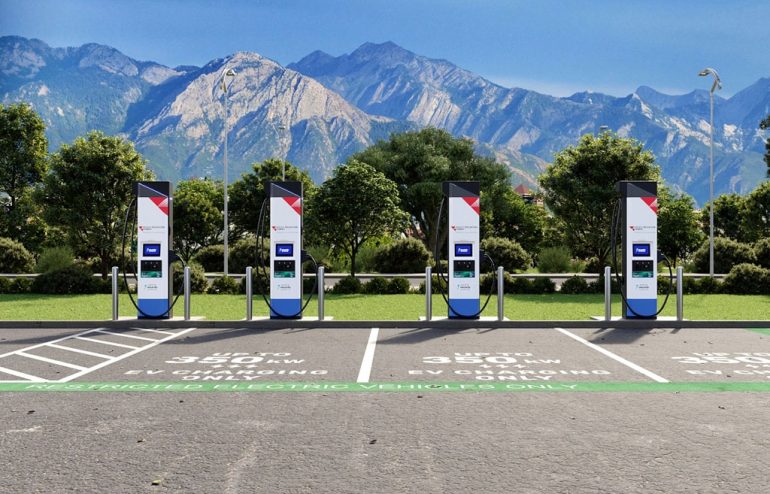
The transition to zero-emissions driving in the United States will require a substantial increase in electric vehicle (EV) chargers. According to the U.S. Department of Energy’s National Renewable Energy Laboratory (NREL), an estimated 28 million charging ports will be needed by 2030 to accommodate the projected 33 million light-duty electric vehicles that could be on the road by then.
A new report from NREL, titled the “2030 National Charging Network,” highlights the need for 26.8 million privately accessible Level 1 and Level 2 chargers, along with 1 million publicly accessible Level 2 chargers located near homes and workplaces. Additionally, it emphasizes the necessity of a national charging network to support this unprecedented transition in the automotive industry.
To accelerate EV adoption, the Biden administration announced an ambitious plan in April. Under new Environmental Protection Agency (EPA) rules, two-thirds of all new passenger vehicle sales in the U.S. must be electric by 2032. Currently, EVs constitute only about 1% of the 284 million vehicles in operation on American roads. However, they are projected to account for approximately 8% of new-vehicle sales this year.
Currently, the existing charging infrastructure consists of a combination of private residential chargers and approximately 150,000 public chargers. However, previous estimates from S&P Global Mobility suggested that the country would require around 2.3 million public chargers by 2030, representing a fifteen-fold increase from the current number. A current movement within the Tesla side of things shows an aggressive transition to adopt the Tesla NACS (North American Charging Standard) plug and infrastructure over the current CCS (Combined Charging System), which could be a good thing to speed up the population of EV chargers in America.
The NREL researchers faced challenges in predicting the national-level EV charging infrastructure needs. They examined various factors such as EV adoption patterns, vehicle technology, residential access, travel profiles, and charging behavior. The analysis revealed that while most EV buyers desire fast charging initially, they tend to prefer home charging after purchasing their vehicles due to its cost-effectiveness and convenience. Approximately 95% of EV drivers recharge their vehicles at home, according to a recent survey.
According to the NREL report, a successful charging ecosystem should include fast charging, convenient destination charging, and home charging. To support 33 million battery electric vehicles by 2030, the ideal ecosystem would comprise 26.8 million privately accessible Level 1 and Level 2 charging ports, 182,000 publicly accessible fast charging ports along highways and in local communities, and 1 million publicly accessible Level 2 charging ports located near homes and workplaces.
The required mix of chargers will vary across communities. Densely populated areas with a high percentage of renters will require more investments to support ride-hailing electrification and EV drivers lacking residential charging access. Conversely, rural areas will require more fast charging infrastructure along highways to facilitate long-distance travel.
The NREL researchers compare the different types of charging to a tree, with home charging acting as the hidden but essential part of the system that enables growth in more visible locations. Public fast charging forms the trunk, supporting road trips and EV drivers without residential access, while destination chargers represent the branches that can thrive only when other types of charging are available.
Building the necessary recharging infrastructure is estimated to require an investment of $53-$127 billion, including $22-$72 billion for privately accessible Level 1 and Level 2 chargers, $27-$44 billion for publicly accessible fast chargers, and $5-$11 billion for publicly accessible Level 2 chargers. As of March 2023, $23.7 billion in funding has been announced for publicly accessible light-duty battery electric vehicle charging through the end of the decade. President Biden’s Bipartisan Infrastructure Law has allocated $7.5 billion for EV charging and committed to establishing a national network of 500,000 EV chargers by 2030.
The NREL report also highlights the importance of establishing charging infrastructure ahead of the demand. It suggests that many drivers need to see charging stations available at frequented locations and along their travel routes before gaining confidence in purchasing an electric vehicle.

Mike Floyd is a finance executive by trade and a car enthusiast at heart. As a CFO with a keen eye for detail and strategy, Mike brings his analytical mindset to the automotive world, uncovering fresh insights and unique perspectives that go beyond the surface. His passion for cars—especially his favorite, the Porsche 911, fuels his contributions to Automotive Addicts, where he blends a love for performance and design with his professional precision. Whether he’s breaking down industry trends or spotlighting emerging innovations, Mike helps keep the site both sharp and forward-thinking.